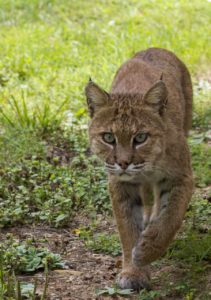WELLFLEET — The bobcat that was found deceased on Chequessett Neck Road on Feb. 13 and then frozen by animal control officers was not, in fact, a Bob. U.S. Dept. of Agriculture staff in Riverdale, Md. confirmed that the bobcat was a young female after defrosting it to test it for rabies, said Wellfleet Animal Control Officer Jacob Berrick.
What does it mean that the animal was not a strapping young lad but a female feline? “I’m hoping there is a breeding population out here,” Berrick said.

According to the Mass. Div. of Fisheries and Wildlife’s website, bobcats breed from February through March, and the young are born after a 62-day gestation period in April or May. That means if there is a breeding population there could be more sightings later this spring.
Others aren’t as hopeful as Berrick. “My feeling is that there is not a breeding population,” said Mass Audubon Regional Director Melissa Lowe. “We haven’t seen any evidence of it. But you can never say never with the natural world.”
The USDA did not disclose whether the dead bobcat was pregnant, Berrick said. Females reach sexual maturity after one year (males fall a year behind in that category) but don’t typically produce their first litter until two years of age. The USDA has not yet confirmed the age of the animal, Berrick said.
Bobcats can be identified by their short, bobbed tails, furry faces, and yellowish fur flecked with faint black spots. Their tracks can be confused with those of a domestic cat but are much larger; bobcats’ paws have four toes in the front and one in the back.
And although Lowe hasn’t seen evidence of a breeding population here yet, it doesn’t mean there won’t be one in the future. The Cape Cod National Seashore is the perfect spot for a bobcat, with its acres of undeveloped land and dense brush, not to mention its sandy beaches and bohemian charm.
“If it’s going to happen, the Seashore is a prime location,” Lowe said. “In my mind, anyway.”



